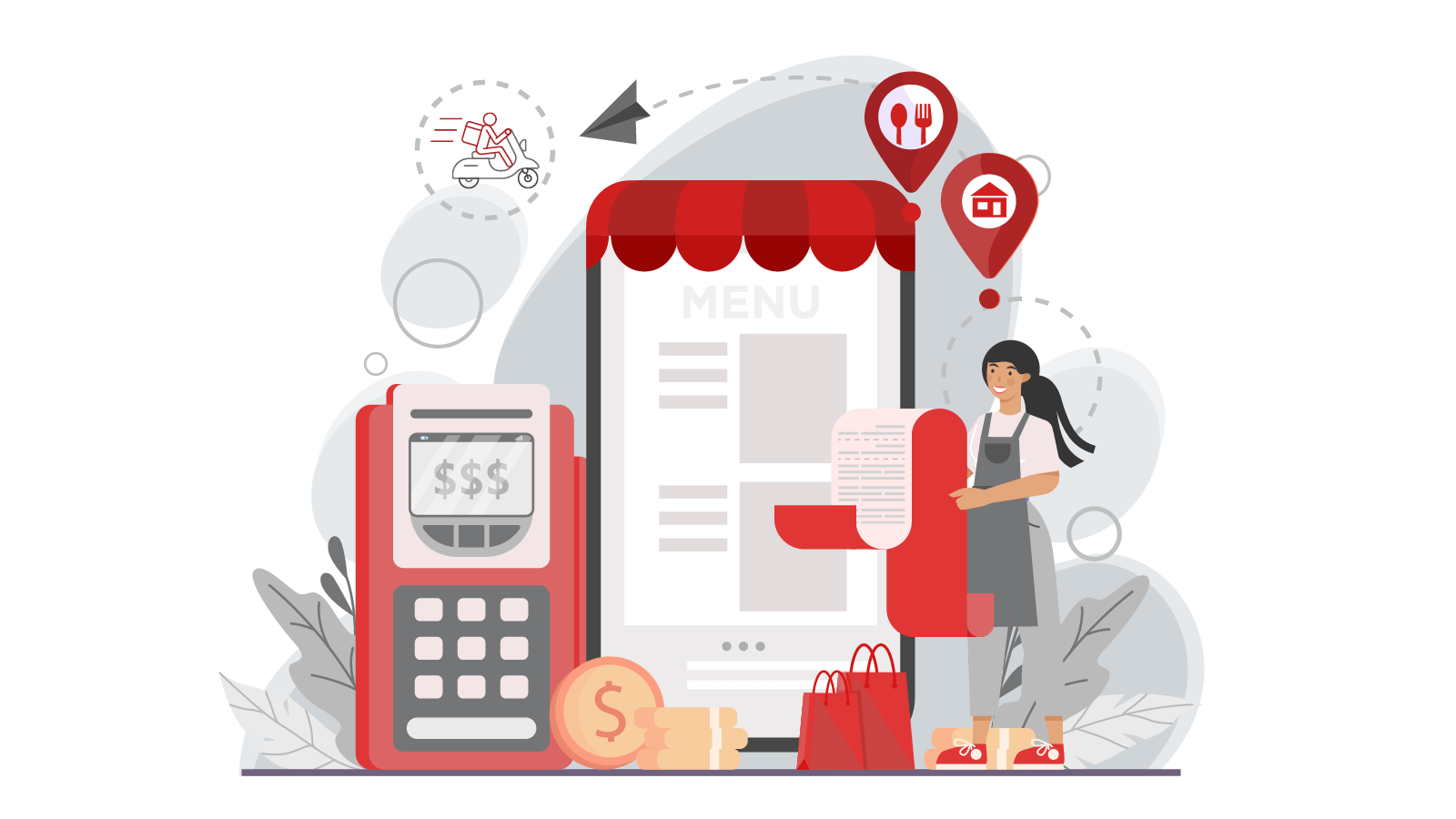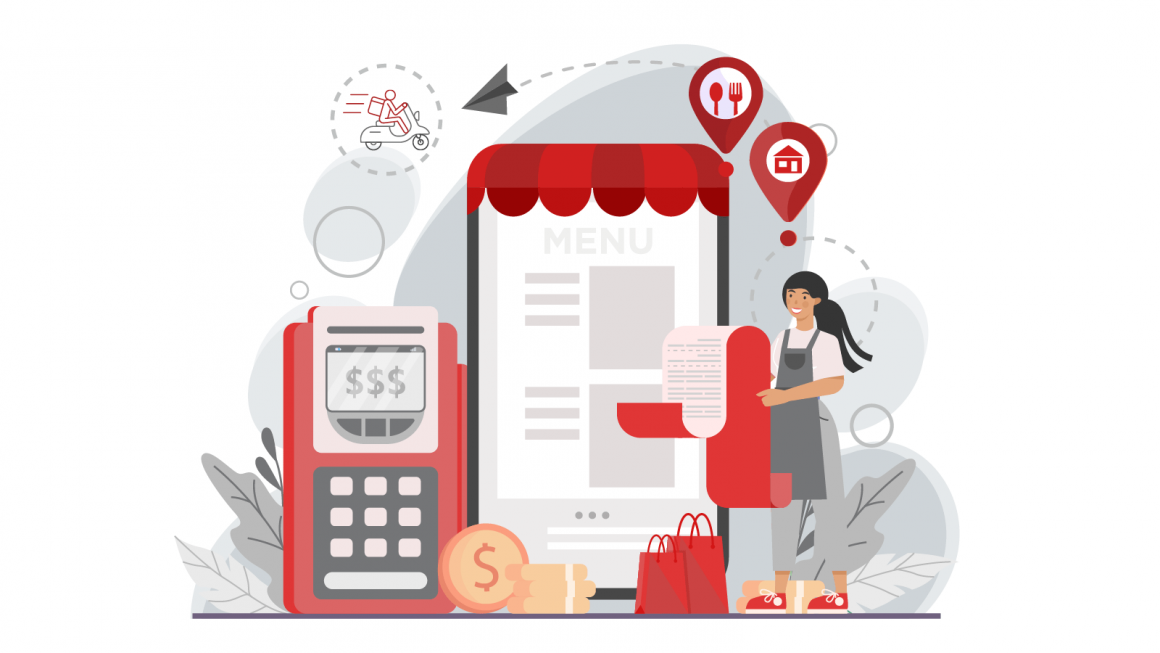
By 2024, the number of consumers using a food delivery service in the United States is projected to reach 69.9 million. What began as pandemic-driven behavior has turned into a continuing trend—diners enjoy the convenience of ordering food digitally and having their meal arrive at their door.
Food delivery is not only a growing market, but it is an important differentiator for restaurants operating in competitive landscapes. On a Friday night, if your restaurant provides an easy food delivery option, you might win over customers who aren’t in the mood to drive to their favorite restaurant to pick up an order or to dine in.
However, diving into the world of food delivery isn’t always easy. For restaurants that previously only handled in-person dining or a to-go order here and there, the influx of new delivery orders can create chaos in the kitchen. And in some cases, even restaurants that have been offering delivery for years are now struggling to keep up with the rising demand for these orders.
In this guide, we’ll offer you the tips and tricks you need to know to create a streamlined food delivery process. The end result is that you can enjoy an increased revenue stream from popular food delivery services.
#1: Audit Your Ordering System
In many cases, your food delivery process fails before it even begins. If you don’t use the right technology, it can be cumbersome for customers to place orders, and critical details can get lost in the transfer of information. Or, worse yet, a customer may abandon their order midway, frustrated by the difficulty of use.
When auditing your ordering system, take the time to examine each of the following components of the process:
- Direct channels and third-party apps: When your customers wish to place an order with your restaurant, how do they go about doing this? For many businesses, there are numerous methods available to customers, including via the restaurant’s website, branded app, or even third-party platforms, such as UberEats or GrubHub. To ensure that your delivery process is efficient, take the time to assess how well information is traveling from each of these channels to your team. Look for any confusion or conflict in menu items that are offered, and consider nixing any platform that is cumbersome for customers or leads to confusion for your staff. If necessary, invest in a website redesign and your own branded app to help create a more accurate order process.
- Your POS system: After an order is placed, how well does this information travel to your POS system to alert your staff of what action they need to take? Make sure that any platform you use can be easily integrated with your existing POS system. This will prevent errors or important client notes from being lost along the way.
- Your payment processing system: When customers place their orders, how do they make payment? Ideally, there should be numerous methods for customers to pay for their delivery order, and their payment information should be processed through a secure system.
#2: Create a Specialized Menu
When the pandemic first pushed restaurants to adopt delivery options, many made the mistake of simply transferring their entire menu into a delivery format. The problem is that not all food travels well, which can lead to a poor experience for customers.
Not only that, but when restaurants attempt to provide their full menu for delivery, it can become difficult for kitchen staff to keep up with the demand.
Streamline your process by creating a specialized delivery menu. Focus on popular and high-profit menu items that will travel well and remain appetizing even when delays in delivery occur.
One of the best ways to go about creating this menu is to work with your kitchen staff to understand what food items are the fastest to prepare and test out these items by transporting them to your own home.
In some cases, you might even want to add to your existing menu, tweaking menu items and getting creative with food presentation.
Continue to pay attention to how well specific meals perform by watching your reviews and ratings. If you notice that delivery customers constantly leave poor ratings for particular menu items, it might be worth revisiting your menu.
#3: Offer Family Style Menu Options
When a family of five orders five individual menu items for delivery, it will be time-consuming for your kitchen staff to fulfill this order. However, if the same family had the option to order a family-style meal, your kitchen staff could complete the order faster.
Look for foods on your menu that you could convert into a family-style meal. Investing in the right to-go containers can allow your kitchen staff to cook in bulk and serve up entrees and side pairings that will work well for multiple diners to share.
If possible, consider pairing drink items with family meal options as well. You can provide discounted prices to encourage family-style meals while improving your efficiencies in the kitchen and delivery process.
For example, a family-style fajita dinner with a large side of rice and beans and a discounted price on a jug of margaritas is much easier for your staff to prepare and deliver than five different meal items off your menu.
#4: Design the Right Space
As kitchen staff scrambles to keep up with delivery orders, a lot of inefficiencies occur due to the layout of your kitchen. Work with your staff to determine the best workflow to ensure that delivery orders are not getting lost in the mix.
Inside the kitchen, it can be beneficial to create a dedicated space for to-go containers and other items necessary for plating these orders. This will allow staff members to quickly put together delivery orders out of the way of the orders being plated for those dining at your physical location.
After a to-go order has been fulfilled, ensure that there is a clearly marked space for these orders to await their delivery driver. It is extremely important to keep temperature-sensitive menu items at the ideal temperature. Nothing is more off-putting to a customer than receiving an ice-cold food item that should have been steaming hot.
Finally, make sure that everyone knows how to communicate about the status of an order throughout the fulfillment process. Relying on busy kitchen staff to be able to alert each other of the completion of an order manually is not ideal. Instead, use technology to allow everyone from cooks to servers an easy way to check up on the status of an order and indicate when the order is ready to go.
Additionally, if your restaurant is large enough or you are operating multiple locations, consider testing out a ghost kitchen dedicated to fulfilling only delivery orders. This can help you cut down on chaos in the kitchen while increasing the speed of delivery order fulfillment.
#5: Tap into a Quality Delivery Service
Once you have established an efficient workflow from order placement to fulfillment, the last leg of the journey is the physical delivery of the food to your customer. This is where it is imperative to tap into a robust delivery driver network.
For many restaurants, it is not cost-effective to hire dedicated delivery drivers, but third-party platforms can also be a profit drain. High commissions on deliveries can quickly chip away at the money you should be making from delivery orders.
This is where Ally’s network of over 100,000 delivery drivers can help. Using Ally’s integrated suite of applications, restaurants can accept orders and handle communication between staff, drivers, and customers, all without losing a penny in commissions.
Not only that, but Ally allows you to handle online orders with a web store plugin and branded iOS/Android mobile apps. The Ally platform will allow you to aggregate orders from both your own branded app as well as other channels. Everything integrates with your POS and payments systems, plus back-of-house order management systems and universal printing help streamline order processes.
To learn more, get started today and find out how you can better streamline your delivery process.

